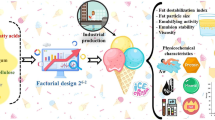Abstract
Research has intensified in recent years on organic solvent pulping processes to supplement or replace conventional pulping processes. One of the main problems with organosolv pulps is the inferior tear strength compared to kraft pulps. An investigation of the properties of two acidic (acetic acid organosolv and acid sulfite) and one basic white spruce pulp (kraft) was carried out to determine factors affecting differences in tear strength. Properties evaluated were lignin and sugar content, mineral composition, ESCA oxygen-to-carbon ratios, acid-base characteristics, water wettabilities, degree of polymerization and crystallinity of cellulose, fiber length and coarseness, and physical properties of the various pulps. Differences in tear strength have been attributed to degradation and changes in the cellulose structure, the hemicellulose-lignin matrix in which the degree of polymerization of hemicelluloses plays the most important role in low yield pulps, and finally, the bonding capacity of the fiber surfaces.
Similar content being viewed by others
References
d'A Clark, J. (1978)Pulp Technology and Treatment for Paper. San Francisco: Miller Freeman Publications.
Davis, J. L. (1987)Acetic Acid Pulping of Wood, Doctoral thesis, Department of Forestry, University of Wisconsin, Madison, WI, USA.
Dorris, G. M. and Gray, D. G. (1978a)Cellulose Chem. Technol. 12(6), 721–734.
Dorris, G. M. and Gray, D. G. (1978b)Cellulose Chem. Technol. 12(6), 735–743.
Forgacs, O. L. (1961)Tappi J. 44(2), 112–119.
Gottlieb, K., Meckel, J., Preuss, A. W. and Berg, A. (1992)Proc. Solvent Pulping Symposium, Tappi, Atlanta, pp. 35–39.
Hartler, N. and Nygren, L. (1970)Tappi J. 53(5), 820–828.
Helle, T. (1963)Svensk Papperstendning 24(31), 1015–1030.
Kerr, A. J., Kibblewhite, R. P. and Andrew, I. A. (1979)Appita 32(6), 433–440.
Kettunen, J., Laine, J. E., Yrjala, I. and Virkola, N. E. (1982)Paperi ja Puu 4, 205–211.
Kull, G. (1962)Proc. EUCEPA Symposium, Stockholm, pp. 20–23/9.
Laine, J., Stenius, P., Carlson, G. and Ström, G. (1994a)Cellulose 1, 145–160.
Laine, J., Lövgren, L., Stenius, P. and Sjöberg, S. (1994b)Colloids and Surfaces A: Physicochemical and Engineering Aspects 88, 277–287.
Lora, J. H. and Pye, E. K. (1992)Proc. Solvent Pulping Symp., Tappi, Atlanta.
Mjoberg, P. J. (1987)Cellulose Chem. Technol. 15, 481–486.
Page, D. H. (1967)Tappi J. 50(9), 449–455.
Page, D. H. (1983)J. Pulp and Paper Sci., March, TR15-TR20.
Page, D. H. (1994)Tappi J. 77(3), 201–203.
Page, D. and MacLeod, J. M. (1992)Tappi J. 75(1), 172–174.
Paszner, L. and Behera, N. C. (1985)Holzforschung 39, 51–61.
Paszner, L. and Behera, N. C. (1989)Holzforschung 43(3), 159–168.
Rydholm, S. (1965)Pulping Processes New York: John Wiley & Sons.
Scallan, A. M. (1971)Textile Res. J. 41, 647–652.
Scallan, A. M. (1983)Tappi J. 66(11), 73–75.
Scallan, A. M. and Grignon, J. (1979)Svensk Papperstendning 2, 40–47.
Schroeder, L. R. and Haigh, F. C. (1979)Tappi J. 62(10), 103–105.
Seth, R. S. and Page, D. H. (1988)Tappi J. 71(2), 103–107.
Sjöström, E. (1981)Wood Chemistry New York: Academic Press.
Staudinger, H. and Jurisch, J. (1939)Melliand Textilber. 20, 693.
Tomlinson, G. H. (1960)Pulp and Paper Magazine of Canada, May, T283-T288.
Young, R. A. (1976)Wood and Fiber 8, 120–128.
Young, R. A. (1986) InCellulose: Structure. Modification and Hydrolysis (R. A. Young and R. M. Rowell, eds.). New York: John Wiley & Sons, pp. 91–128.
Young, R. A. (1989)Tappi J. 72(4), 195–200.
Young, R. A. (1994)Cellulose 1, 107–130.
Zilbergleit, M. A. and Glushko, T. V. (1992)Transformation of Monosaccharides in Aqueous Solutions of Acetic Acid. 6th ISWPC, pp. 477– 479.
Author information
Authors and Affiliations
Rights and permissions
About this article
Cite this article
Fernandez, E.O., Young, R.A. Properties of cellulose pulps from acidic and basic processes. Cellulose 3, 21–44 (1996). https://doi.org/10.1007/BF02228789
Issue Date:
DOI: https://doi.org/10.1007/BF02228789




